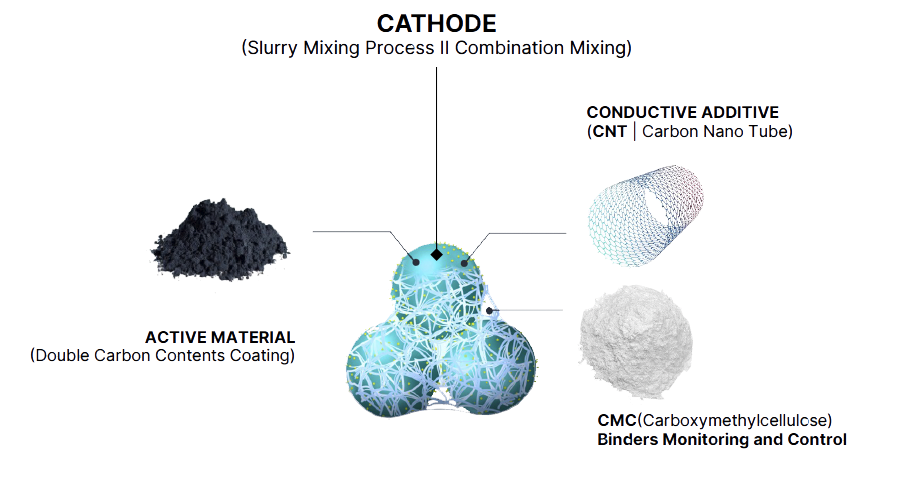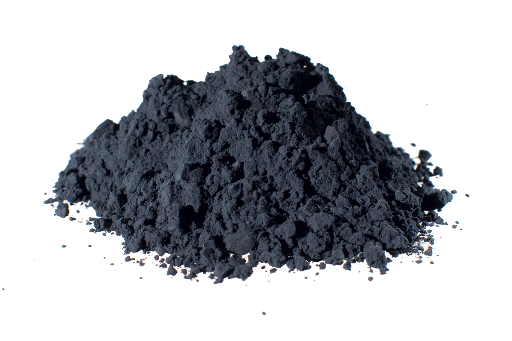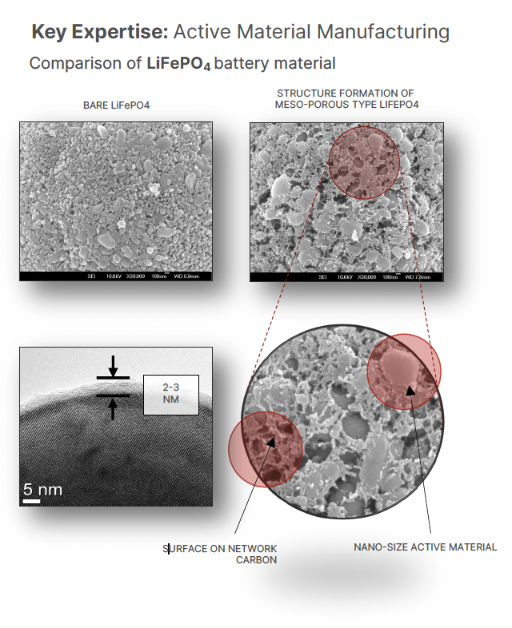XT Vault Inc.
Pioneering the Future of Battery Technology
XT Vault Inc. is redefining the battery industry with cutting-edge technology, sustainable innovation, and a team of world-class experts. Founded on a strategic merger of advanced technologies and critical materials, XT Vault delivers groundbreaking energy solutions that power the future.
With decades of experience designing and operating global Giga-watt scale Li-ion facilities, XT Vault’s team leads the charge in battery innovation. From next-gen LFP and solid-state designs to AI-driven battery management systems, the company is at the forefront of high-performance, eco-friendly solutions for automotive, defense, renewable energy, and beyond.
Now, XT Vault is scaling up with plans to establish a 50GWh LFP battery facility in the U.S., solidifying its role in building a sustainable and secure energy future.
1. Silicone Anode Material Technology
This technology focuses on enhancing the safety and efficiency of Lithium-Iron Phosphate (LFP) batteries by integrating silicon anode materials. Silicon anodes have higher energy storage capacities than traditional graphite anodes, but their expansion during charge cycles poses challenges. Advanced preparation methods ensure a stable structure that minimizes expansion, maintains battery integrity, and enhances cycle life, ultimately resulting in safer and longer-lasting LFP batteries.

2. Electrode Active Material Fabrication Method
XT VAULT's technology for manufacturing Active Material enables the production of meso-porous materials with enhanced carbon networks, elevated mass density, and improved capacity, ensuring superior performance and efficiency in energy storage applications.
3. Cathode Active Material Production
This process emphasizes the use of advanced conductive materials, metallic oxides, or their mixtures to produce cathode active materials for LFP batteries. These components are carefully engineered to improve conductivity, energy transfer rates, and thermal stability. The production techniques also focus on enhancing the uniformity and scalability of the materials, making them suitable for mass production.

4. Manufacturing of Fluorinated Organic Solvent and Separator Surface Treatment
This technology develops specialized fluorinated organic solvents that improve the chemical stability and performance of electrolytes in LFP batteries. Additionally, it includes advanced surface treatments for battery separators, ensuring better ion transport and thermal resistance. This dual approach enhances battery safety and extends operational life, particularly under extreme conditions.
5. Preparation Method for LFP Battery Electrode Active Material
This method focuses on optimizing the composition and microstructure of electrode active materials used in LFP batteries. By refining particle size, surface coatings, and material composition, the process ensures superior energy storage capabilities, reduced degradation, and improved conductivity, resulting in more efficient and durable electrodes.
6. Safe Switch Technologies
This innovation provides modular solutions for maintaining battery packs and energy storage systems. It incorporates safety switches that enable seamless maintenance, allowing individual modules to be isolated or replaced without affecting the overall system. This modular design enhances system reliability, reduces downtime, and facilitates easier scalability for various applications.
7. Method for Preparing Cathode Active Material for Lithium Rechargeable Battery
This method employs advanced techniques to produce cathode materials with optimal crystalline structures and chemical compositions. The process ensures high energy density, excellent cycle performance, and thermal stability, making it ideal for lithium rechargeable batteries used in high-demand applications.
8. Electrode Assembly Technologies
These technologies focus on creating innovative compression plates for electrode assemblies, addressing challenges like electrode deformation during operation. The compression plates ensure uniform pressure distribution, enhancing structural integrity and performance consistency. This approach is critical for maintaining battery efficiency and longevity.
9. Method for Preparing Cathode Active Material for Lithium Rechargeable Battery
This preparation method refines the synthesis of cathode active materials by optimizing the chemical reactions and production parameters. The resulting materials exhibit enhanced conductivity, thermal stability, and compatibility with lithium rechargeable battery systems, improving overall performance and durability.
10. Electrode Assembly Technologies
By developing compression plates for electrode plates, these technologies tackle electrode deformation issues during high-stress operations. The designs ensure improved contact between electrodes, better energy flow, and reduced mechanical stress, contributing to the longevity and safety of the battery.
11. Cathode Active Material Mass Production
This eco-friendly production method uses distilled water as the primary solvent for mixing active materials. Known as the "eco mixing method," it eliminates harmful solvents, reducing environmental impact while maintaining high material quality. The process supports scalable and sustainable mass production of cathode
11. Cathode Active Material Mass Production
This eco-friendly production method uses distilled water as the primary solvent for mixing active materials. Known as the "eco mixing method," it eliminates harmful solvents, reducing environmental impact while maintaining high material quality. The process supports scalable and sustainable mass production of cathode material
12. Comprehensive LFP Production Technology
This technology encompasses the entire lifecycle of LFP batteries, from the production of active materials (cathode and anode plates) to cell fabrication and final formation. By integrating every step into a cohesive production process, it ensures efficiency, consistency, and quality control, delivering high-performance batteries for a wide range of applications.
Advantages
The process employs a dual-layer carbon coating technique, beginning with a primary carbon layer applied to the active material's surface, followed by a secondary inter-material network coating. This innovative approach enhances conductivity, improves electrolyte wetting, maximizes surface area optimization, and enables rapid charging kinetics for superior battery performance.
